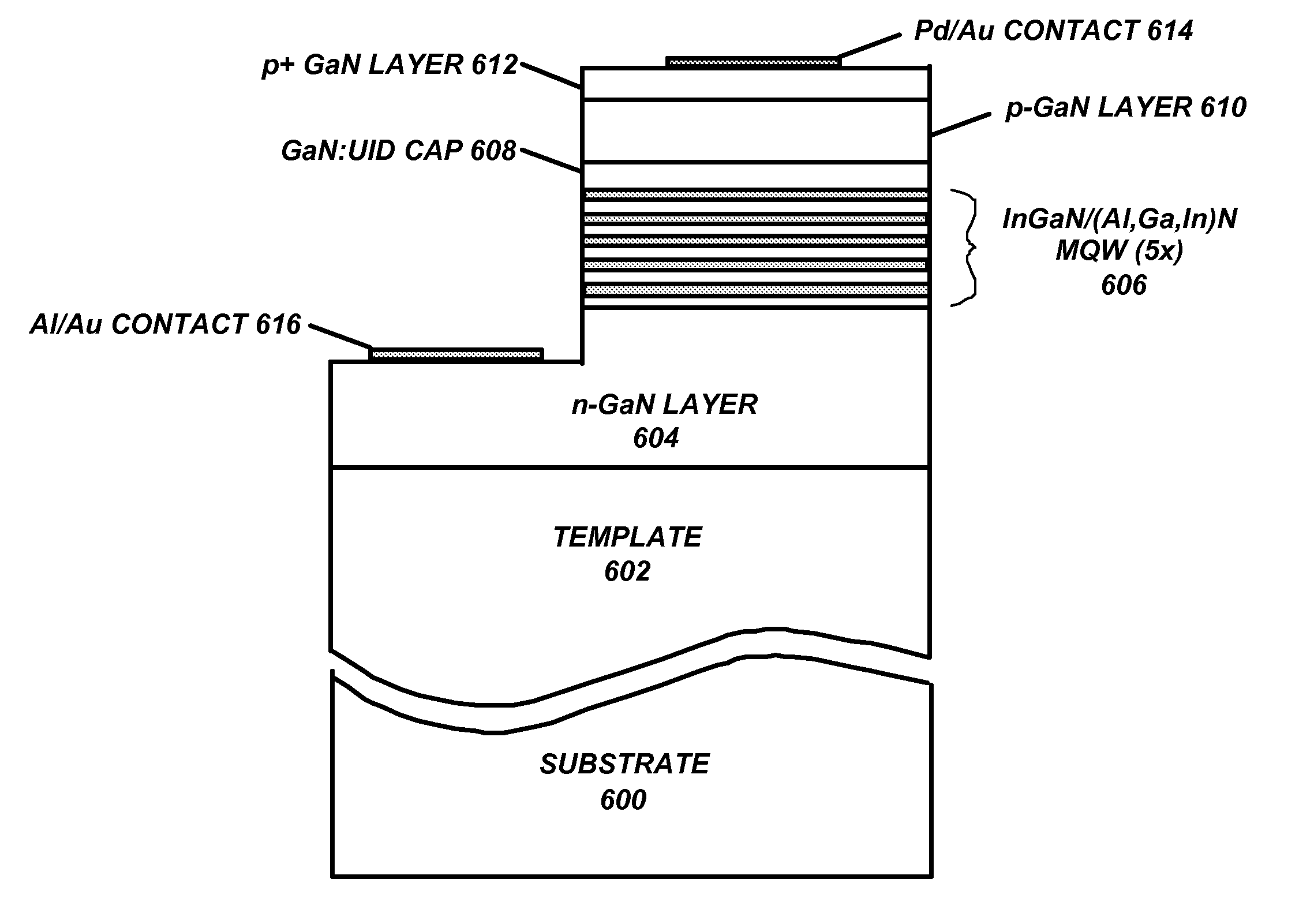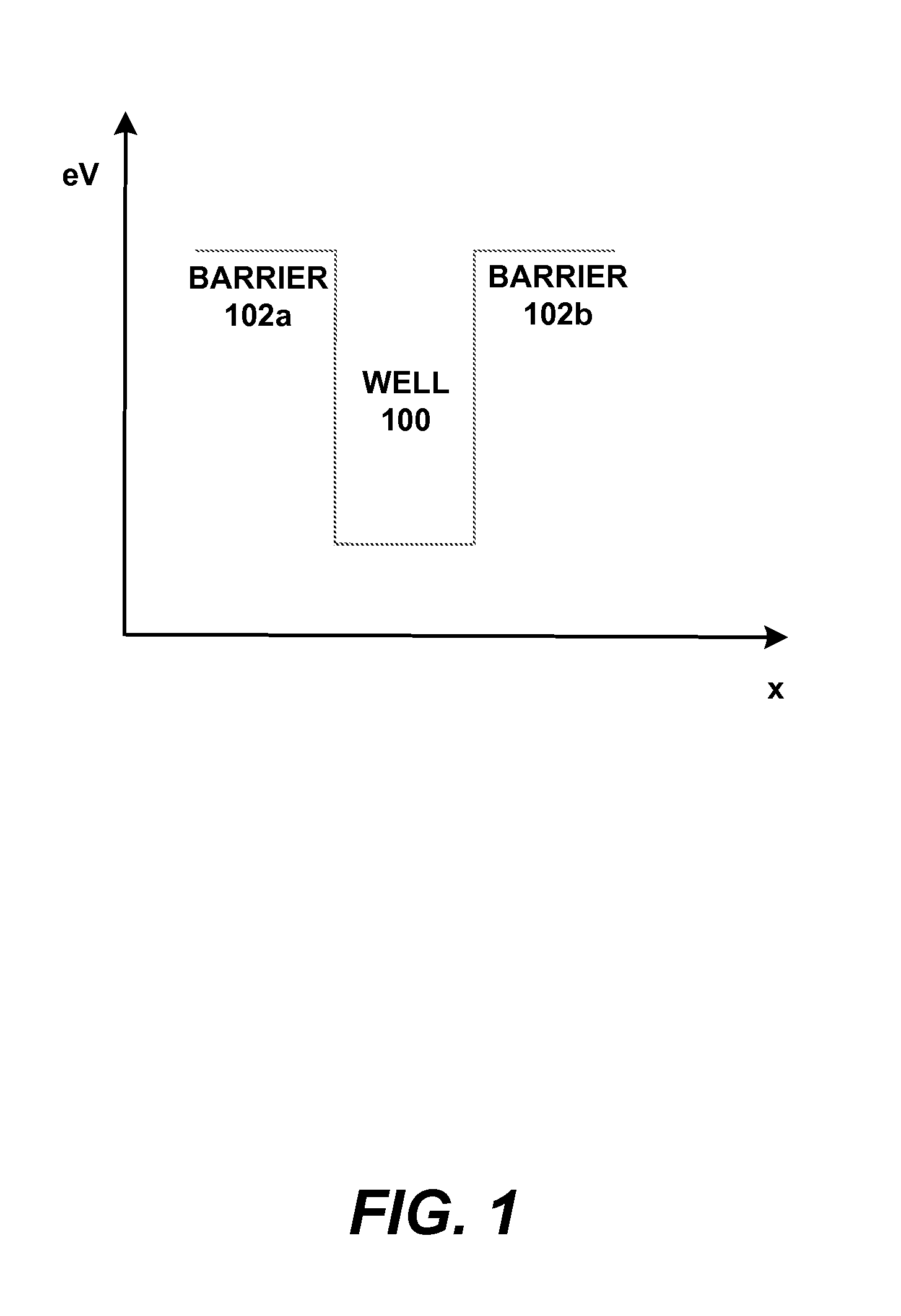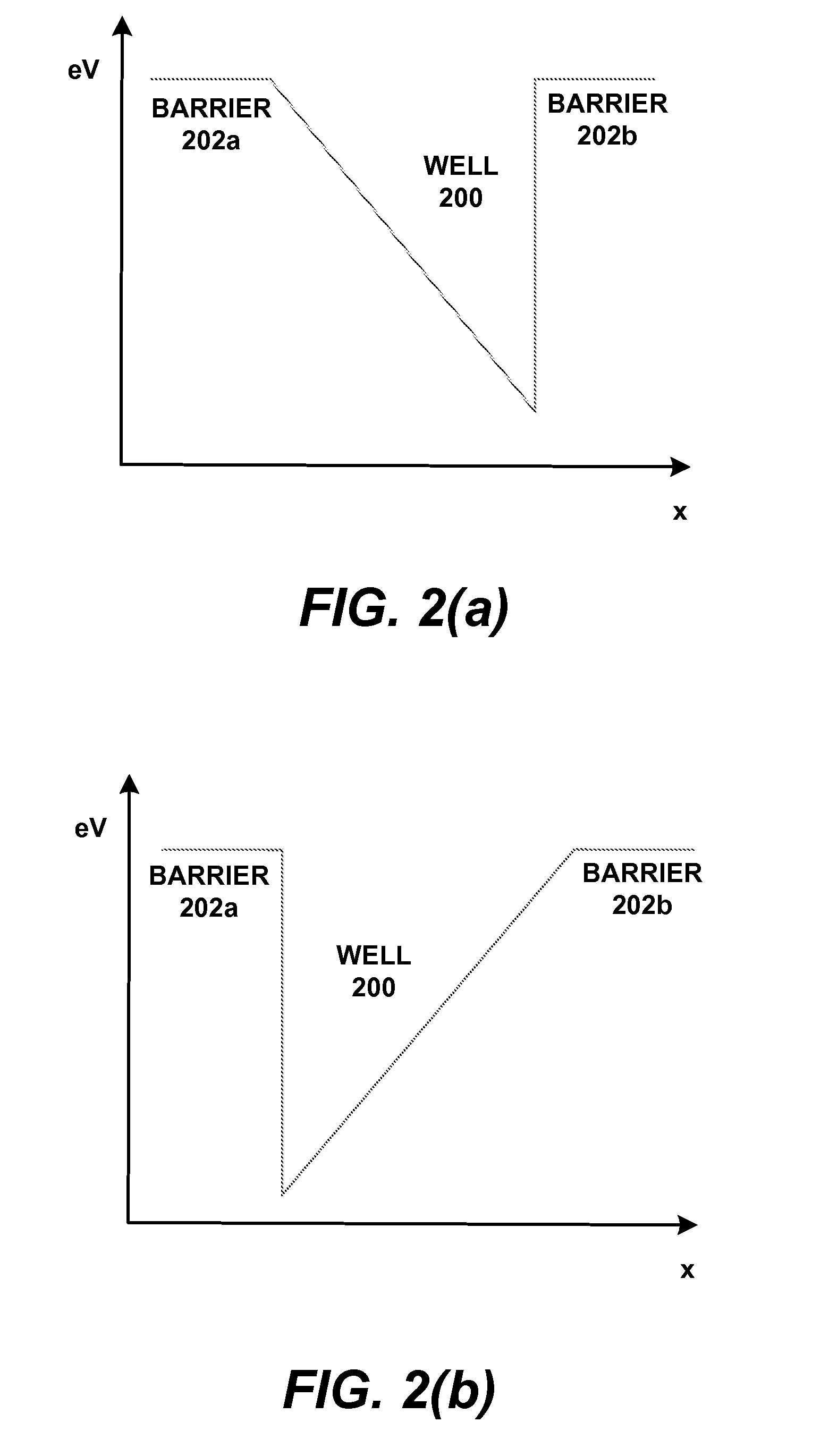Light emitting device with a coupled quantum well structure
a light-emitting device and quantum well technology, applied in the field of light-emitting devices with coupled quantum wells, can solve the problems of lowering the internal quantum efficiency (iqe), adversely affecting the reliability of the device, and creating extended defects such as misfit dislocations
- Summary
- Abstract
- Description
- Claims
- Application Information
AI Technical Summary
Benefits of technology
Problems solved by technology
Method used
Image
Examples
Embodiment Construction
[0030]In the following description of the preferred embodiment, reference is made to the accompanying drawings which form a part hereof, and in which is shown by way of illustration a specific embodiment in which the invention may be practiced. It is to be understood that other embodiments may be utilized and structural changes may be made without departing from the scope of the present invention.
[0031]Device Structure and Fabrication Method
[0032]FIG. 5 is a flowchart describing the process steps for fabrication of a nonpolar, semipolar or polar (Al,Ga,In)N light emitting device according to the preferred embodiment of the present invention, while FIG. 6 is a schematic cross-section of a light emitting device fabricated in FIG. 5 according to the preferred embodiment of the present invention.
[0033]Block 500 represents the fabrication of a smooth, low-defect-density template on a substrate. For example, this Block may represent the fabrication, on an r-plane sapphire substrate 600, o...
PUM
 Login to View More
Login to View More Abstract
Description
Claims
Application Information
 Login to View More
Login to View More - R&D
- Intellectual Property
- Life Sciences
- Materials
- Tech Scout
- Unparalleled Data Quality
- Higher Quality Content
- 60% Fewer Hallucinations
Browse by: Latest US Patents, China's latest patents, Technical Efficacy Thesaurus, Application Domain, Technology Topic, Popular Technical Reports.
© 2025 PatSnap. All rights reserved.Legal|Privacy policy|Modern Slavery Act Transparency Statement|Sitemap|About US| Contact US: help@patsnap.com



